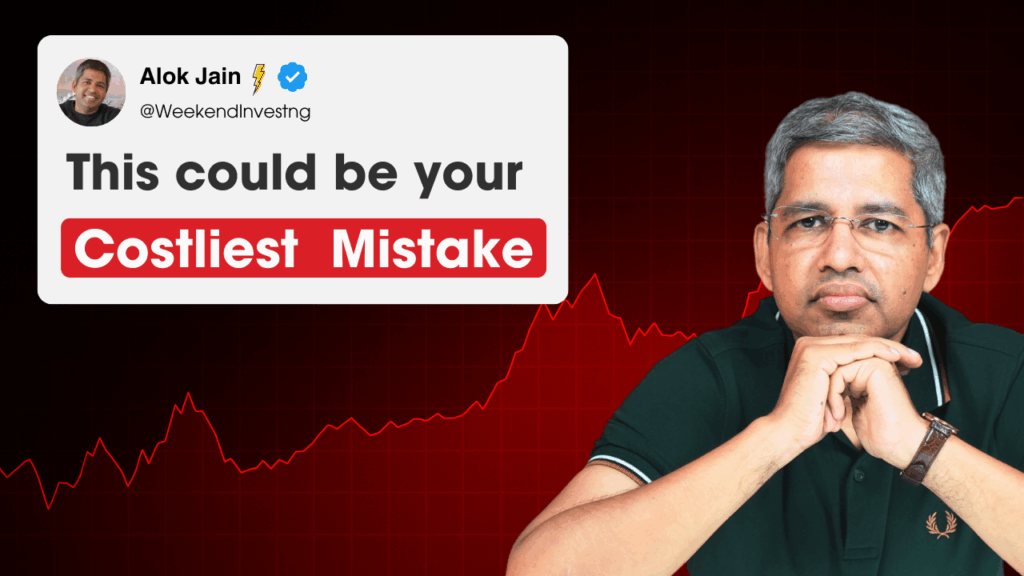Where is the market headed?
The market actually being very volatile today. Three or four sessions of ups and downs on the Nifty and then finally it just went ballistically up, closing above 25,000. This has surprised a lot of folks.
The rest of the market was not as bullish as Nifty, but nevertheless stayed on the green side. The general perception in the last few days has been that the market does not have the strength to go up. But the market is defying all that logic.
Market Overview
There were wild fluctuations three or four times, and then finally the market took off, closing at 1.6% up. 25,062 is the closing.
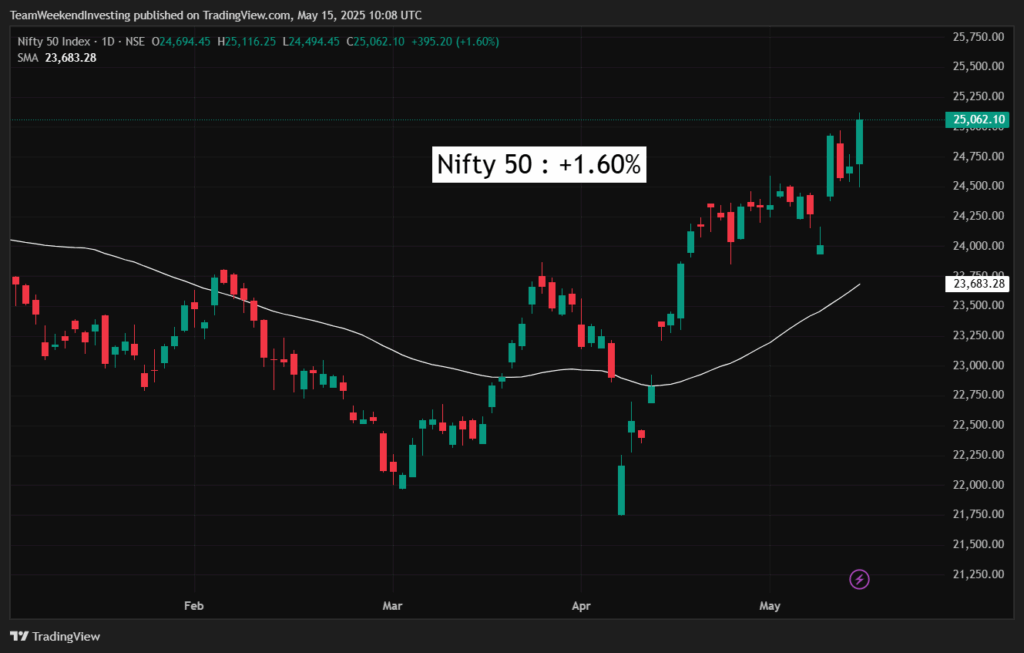
I think the market is now down less than 5% or 6% from the all-time high. So this is a very, very rapid sort of wind-back of the fall. The rest of the market is not yet there. A lot of small-cap and mid-cap stocks are still 30%, 40%, 50% down. But Nifty in its own wisdom is nearing its all-time high again.
Nifty Next 50
Nifty Jr was also up 1%, 1.05%, challenging this April high. The chart patterns look quite robust, and there’s no reason to disbelieve the rally.
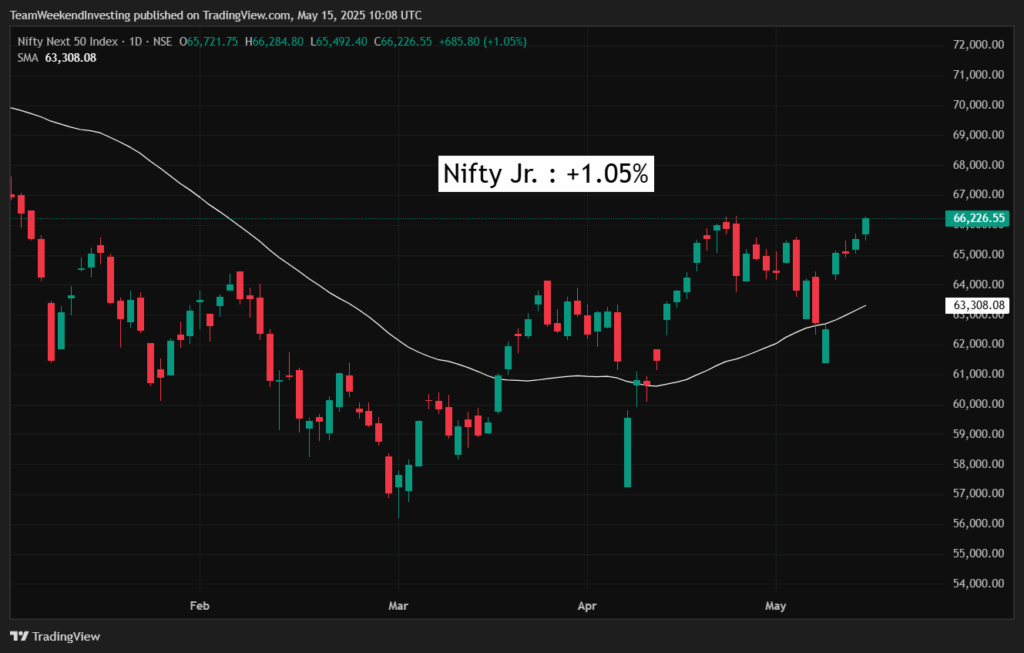
Nifty Mid and Small Cap
Mid-caps flew 0.69%—this is also less than 20% down from all-time highs. Small-caps were up 0.75%, so it is like a rally of disbelief.
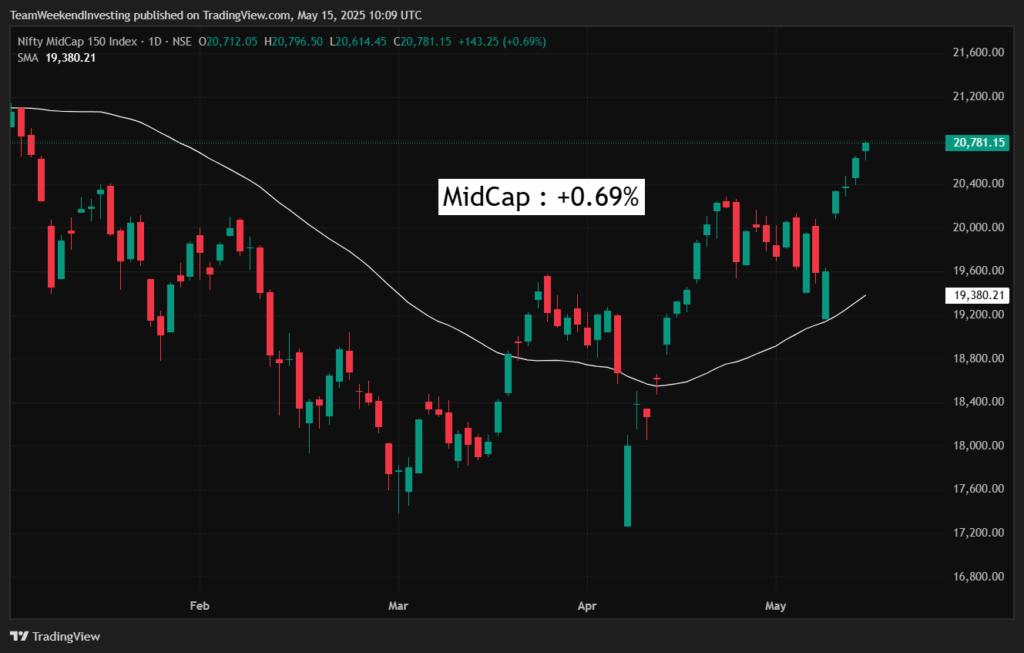
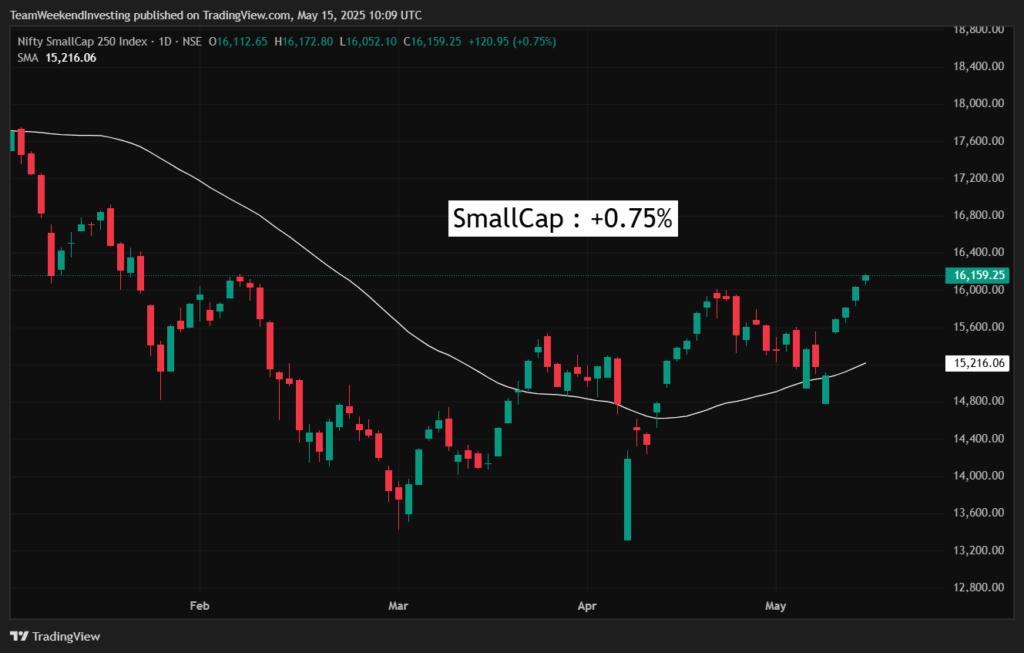
Bank Nifty
Just like they say that markets climb walls of worry, this is exactly what is happening—nobody wants to believe the rally, yet the rally goes on. Bank Nifty is also up 1%.
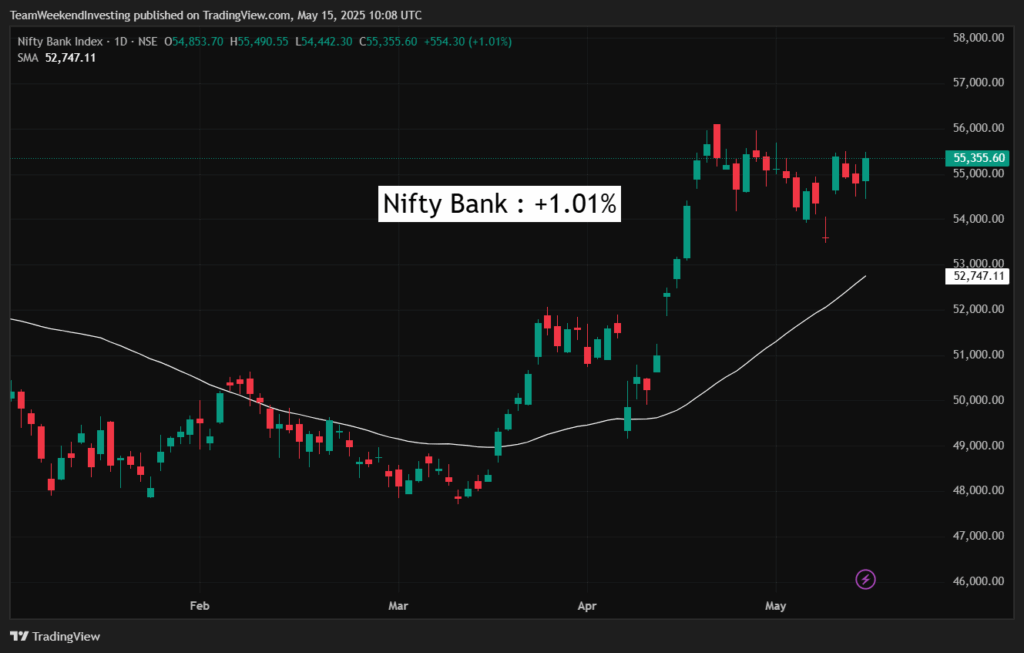
GOLD
Gold has tanked but stabilized today. Gold had hit nearly ₹91,000 and is closer to ₹92,500 per 10 grams. Gold is seeking some bottom. It has tried to break below this support, but is at that exact level right now. Let’s see by the end of the day where it reaches—reasonable pullback to the means.
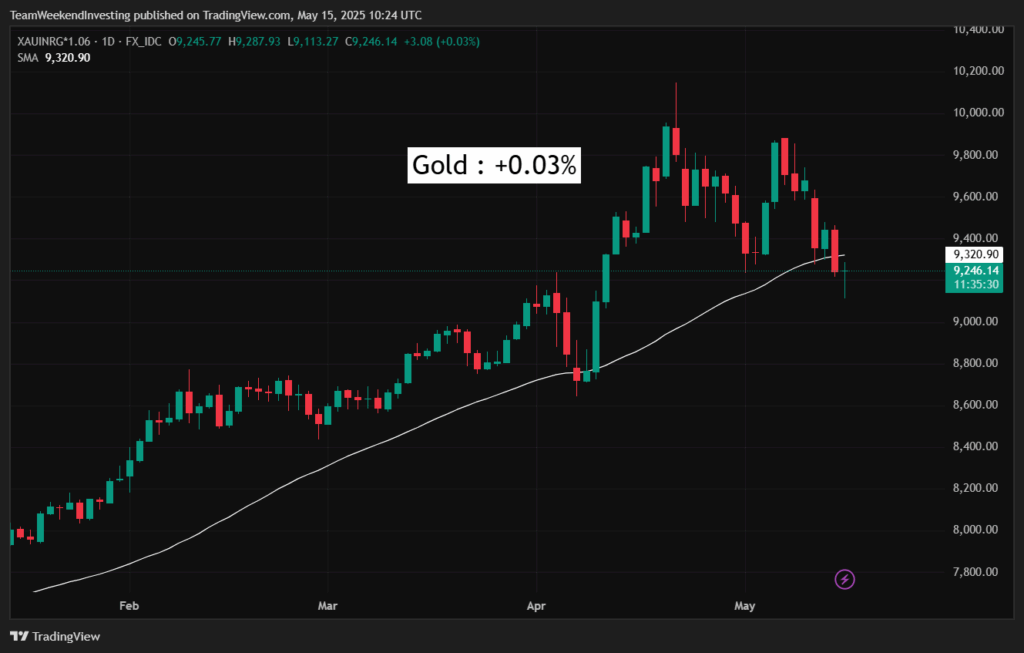
Advance Decline Ratio
Advance-decline trends—you can see below: 375 to 124, very much in favor of advances. During the day, the advances continuously went up and declines continuously went down. So the strength of the market, in fact, improved during the day towards the end.
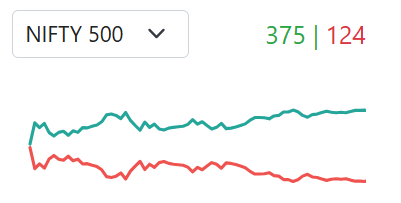
Heat Maps
If you see the heat maps, there is no red on the screen here. Reliance was very handsomely up 2%. HDFC Bank, ICICI Bank, Maruti, Tata Motors. JSW Steel coming back up very nicely. You have UltraTech Cement, even ITC pitching in about 0.8%. Bharti Airtel, after results, was up 1.8%.
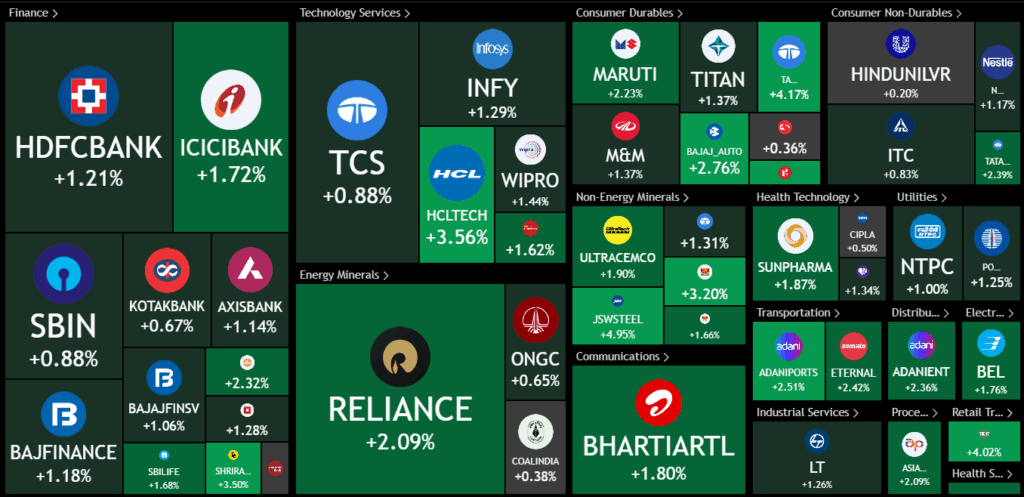
In the Nifty Next 50 also, you can see some big gains coming through for DLF, Bajaj Holding, Lodha, LIC, JSW Energy, HAL, Indigo, Naukri, Shriram Cement, Jindal Steel—all in the second half. Basically, till the first half, this was all gray and now, it is suddenly a lot of green.
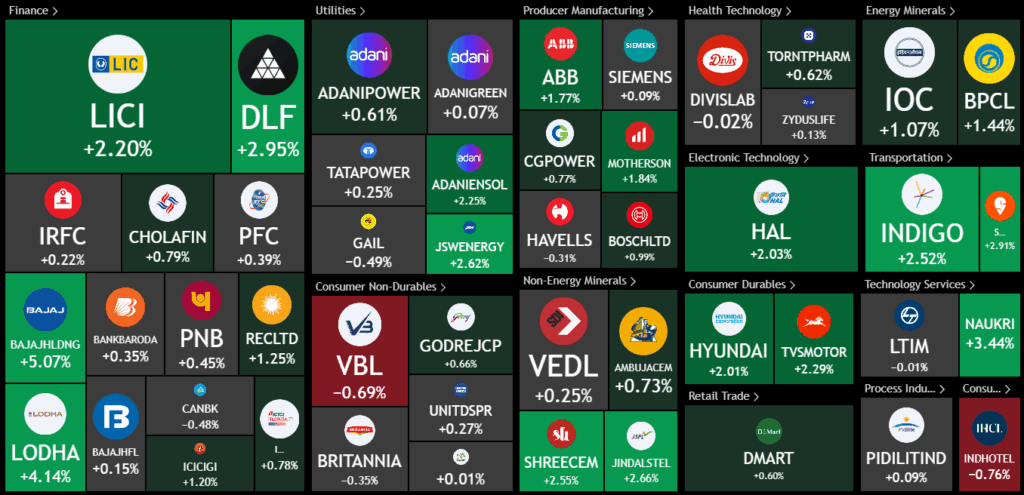
Sectoral Overview
In the sectoral trends, let’s look at top gainers. Again, defense stocks were up 2.6%, so defense is just going up like a missile. Auto was up 1.9%, real estate 1.9%, metals 1.7%. Infrastructure, commodities, media, consumption stocks—all doing 1.5% or more. No sector was in the red today—even IT stocks were up 1.2%. PSU banks and capital markets were a bit slow, resting at 0.2% for the day.

Sectors of the Day
Nifty India Defence Index
Defense stocks like Astra Microwave, Cochin Shipyard, Zen Technologies, Mazagon Dock, and Data Patterns did 3% to 9% for the day. In the last five sessions, defense has just gone ballistic. The defense index is at an all-time high.
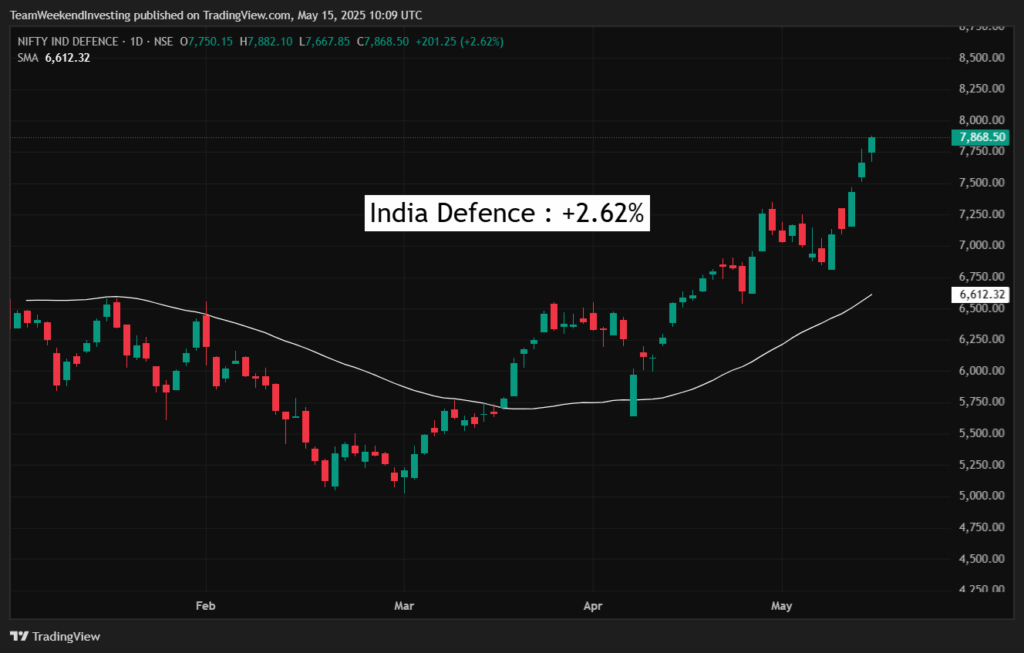
Nifty Auto Index
The auto stocks are also picking up. Autos up 6% on Hero Moto, Tata Motors 4%, Bajaj Auto 2.8%. Maruti and TVS Motors also pitching in. So there is likelihood of better terms for the trade deals, and that is renewing the enthusiasm in auto stocks.
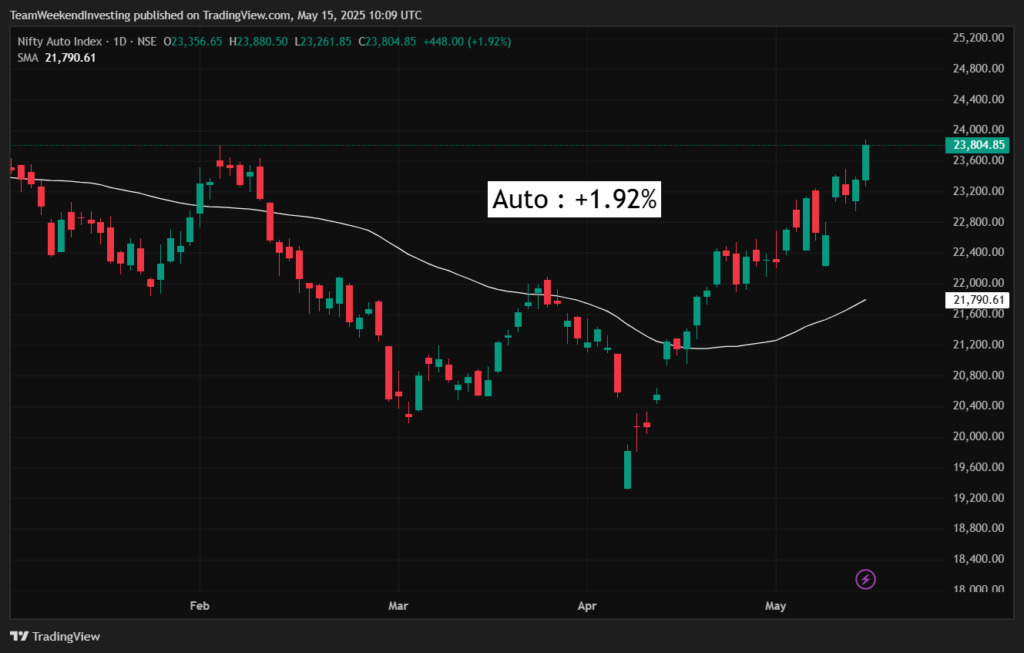
Story of the Day: This Could Be Your Costliest Mistake
let’s now talk about the costliest mistakes some folks may make. It’s going to be a lesson on behavioral bias. PayTM shares slid as Ant Financial offloaded a 4% stake via block deal. This was reported. PayTM, as we know, is very much off its IPO price—has languished as low as nearly ₹300, went to ₹1100, and now is here.
A big chunk of stock is likely getting sold through a block deal. The story so far is that Ant Financial’s stake in PayTM dropped from 9.8% to 6%. PayTM reports a loss, the company is amidst financial and operating challenges, and PayTM stock remains volatile due to regulatory issues. That has been the story around so far.
A lot of investors who invested in the PayTM IPO may be struggling with this stock—what to do with it, whether to exit. There have been multiple negative news. Earlier, Warren Buffett had exited the stock. And essentially, at each stage of a fall, investors remain confused whether to hold, exit, or hope for a recovery.
Now all those investors are basically dealing with two biases: the anchoring bias and the confirmation bias. So, what is anchoring bias? Anchoring bias is basically being anchored to your impression of the company. If You are anchored that PayTM is a great company, then you are anchored to a particular price or belief that this company can make it—this can influence decisions.
The other one is the confirmation bias, where we seek information that confirms our thoughts—rightly or wrongly. These two biases essentially can cloud our decision-making ability. PayTM is just an example.
Let’s discuss confirmation bias first. As mentioned, it’s a tendency to process information by looking for or interpreting information that is consistent with existing beliefs. If you believe that PayTM is a great company, then you will seek that information which confirms this view, and possibly ignore the contrary.
Let’s take an example: Rohit, a tech-savvy salaried professional in Bangalore. He has been using PayTM for years—for recharges, payments, movie tickets. For him, PayTM is not just an app—it’s the future of Indian fintech. That’s his belief.
When Rohit sees PayTM everywhere—at Kirana stores, in cabs, in IPL apps—he gets confirmation that yes, PayTM is everywhere. Analysts calling it the “Alibaba of India” further confirm his belief. Warren Buffett investing in it? Another green flag to Rohit.
He applies for the IPO, gets full allotment. But the IPO lists with a 27% loss. Then Macquarie slashes the price target by 48%. Then SoftBank trims its stake. Now it’s a 60% loss. Warren Buffett sells out. Now 80% loss. RBI scrutiny comes in. More stress.
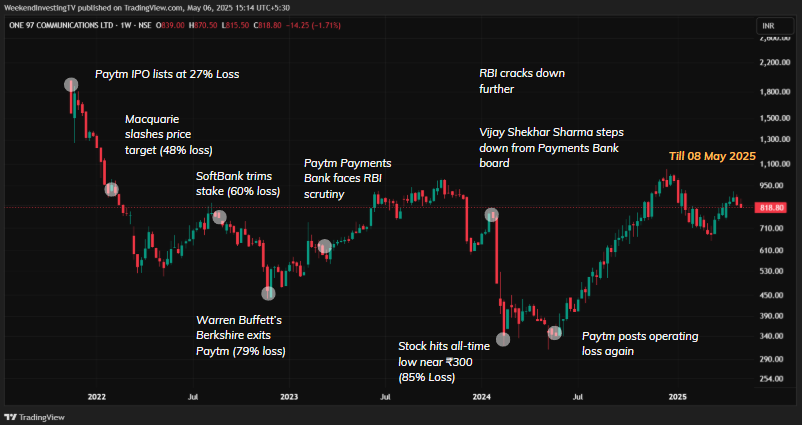
Then a rally. Then more RBI crackdown. Vijay Shekhar Sharma steps down from the bank’s board. The stock hits ₹300. Then again some operating losses. Then a comeback. Now it’s at ₹800.
Throughout, Rohit joins IPO WhatsApp groups, follows bullish handles, and sees every positive news as confirmation. Buys every dip. LIC picks up stake? Another proof he’s right. That’s how confirmation bias works.
But what has this bias cost him? Capital locked in for two years. Constant stress. Constant checking of stock prices. Learning the hard way that a great product does not always mean a great stock.
From a momentum or non-discretionary investing point of view, how would this have been different? First, IPOs are ignored. The stock must prove its worth in the market for six months and create a price history.
Belief-based decisions are replaced with price-based rules. So, in phase one, no buy signal at all. In phase two, a buy signal, but exited within a month with a small loss. Then a down period with no entry. Then, much later, a fresh entry based on trend. Trade still running—maybe no huge gain, but avoided all that early pain.
Capital wasn’t locked. And could be deployed elsewhere. The key learnings: momentum cuts underperformers early. Capital isn’t stuck. Time is not wasted. No anchoring—no holding onto past winners hoping for a comeback. No confirmation bias—no biased justification.
All decisions are rule-based. No belief, no gut feeling. From your own experience, how many times have you been exposed to confirmation bias? Have you been a victim? Let us know in the comments.
Do these case studies ring a bell? Do give your feedback.
WeekendInvesting launches – The Momentum Podcast
In this episode of the Momentum Podcast by Weekend Investing, Alok Jain sits down with Mr. Thomas, a passionate retail investor, to uncover his remarkable journey—from exiting the markets at the worst possible moment during the 2020 crash to finding clarity and consistency through momentum investing.
Topics Covered:
✅How a train journey sparked his interest in the stock market
✅Emotional investing mistakes & lessons from the COVID crash
✅Why he shifted from value to momentum-based strategies
✅The Weekend Investing system that gave him peace of mind
✅How he balances aggressive bets with long-term wealth-building
Whether you’re just starting out or navigating your own investing style, this episode is packed with relatable stories and actionable insights.

